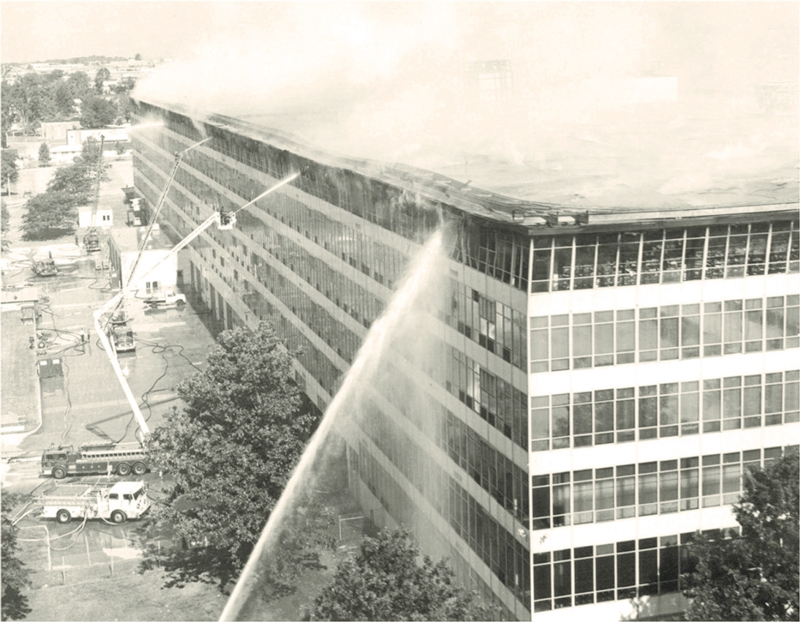
In the early morning hours of July 12, 1973, a fire raged through the sixth floor of the National Archives’ military personnel records building in St. Louis. The fire burned so intensely and the smoke was so thick that firefighters were unable to enter the building, and nearby residents had to stay indoors.
Firefighters couldn’t go inside the building for two days. Even after their entrance, they continued to spray water to suppress potential flare-ups. The process continued until late July. Millions of gallons of water were used. Just as damaging as the fire, mold caused problems. High humidity of the Midwest mixed with the spraying of water every day for weeks wreaked havoc on a large number of files.
The fire, which investigators were never able to determine source due to extensive damages, resulted in the destruction of an estimated 16-18 million official military personnel records. Luckily, 6.5 million records were recovered after the fire. Today, those recovered files are known as “b files,” or burned files. The National Archives continue preservation efforts on files — records affected by mold are stored in a room with special vacuums used to reduce the number of spores and the possibility for mold to return.
Despite the fire happening decades ago, its occurrence has relevant and present consequence on American Legion Auxiliary membership recruitment efforts.
ALA National Headquarters’ Membership Services Division has witnessed many times the confusion and despair that happens when a potential member tries to obtain a record from the National Archives, only to receive a letter saying the records were destroyed.
The obstacle can pose a negative impact on current Auxiliary members too. As they research their own family histories and search for potential member recruits, it’s quite likely they’ll contact the National Archives for assistance. So what do we do when someone comes to us and wants to join the Auxiliary, but has been told that files proving their eligibility were destroyed in the 1973 fire? What do we do if we’re researching potential member recruits and come to the same dead end?
The most common document used to prove eligibility in The American Legion, American Legion Auxiliary, and Sons of The American Legion is what is known as a DD-214 — or a military service discharge paper from the U.S. Department of Defense. And here is where the road block pops up, as these official papers may have been lost in the files destroyed in the fire. Fortunately, there are additional documents beyond the DD-214 that can prove eligibility — official military orders, official military service citations/awards, letters related to the veteran’s military service on official government letterhead, certificate from the VA records center in St. Louis, or data from the back of older discharges.
Make sure you’re in the know on what the American Legion Auxiliary organization accepts as proof of membership eligibility. Visit www.ALAforVeterans.org/Join for a full list of requirements. Visit www.Legion.org to sign up veterans eligible for American Legion membership, and www.Legion.org/Sons to recruit males eligible for Sons of The American Legion membership.
Helpful places, tips in obtaining veterans’ military records
In the spirit of Service, Not Self, the mission of the American Legion Auxiliary is to support The American Legion and to honor the sacrifice of those who serve by enhancing the lives of our veterans, military, and their families, both at home and abroad. For God and Country, we advocate for veterans, educate our citizens, mentor youth, and promote patriotism, good citizenship, peace and security.